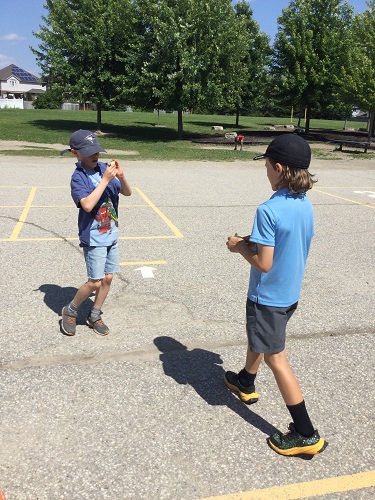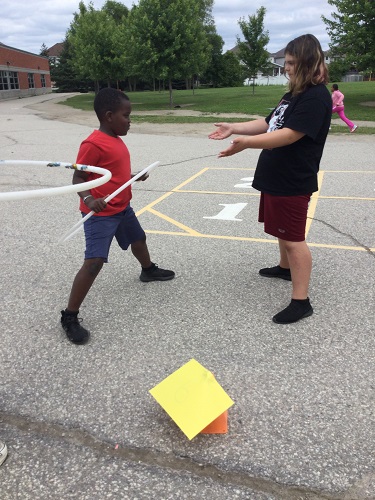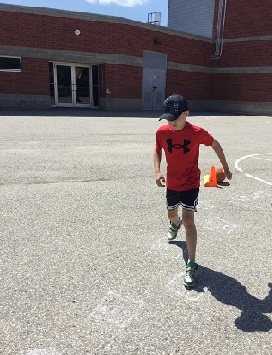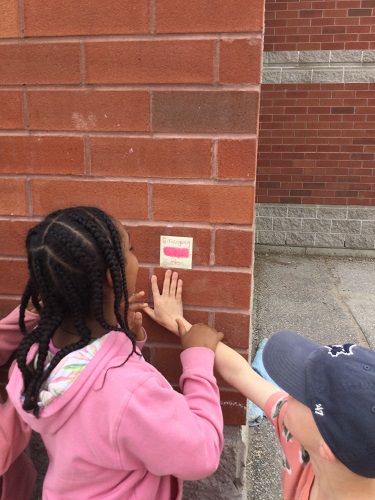The children in school-age 3 have been extremely engaged in the game ‘Among Us’ recently. It started within the classroom environment when a group asked if they could play it once a number of children went home and the room was a little quieter. This small group was the perfect size for an indoor game of Among Us, however they did require a few reminders about using walking feet and keeping a lower voice when the game got super intense and exciting- overall, they displayed classroom respect and were highly engaged together.
The game inspired us to bring it outside, where we could eliminate both of the barriers of voice level and walking feet that the children were faced with in order to make the game more exciting for the group. At first both educators Ali and Vanessa brainstormed some “tasks” to set up outside, then asked the children to collect the materials we’d need to set them up. We chose to have 6 task stations set up and each “crewmate” had 3 tasks to complete without the “imposter” tagging them.
What are crewmates and imposters? The imposter is considered “it” and is tasked with tagging the crewmates in order to eliminate them from the game. If tagged, the crewmate would drop to the ground to indicate they were tagged, and the remaining crewmates would then become suspicious of those around them and could call an “emergency meeting” in order to guess who the imposter was. A red button was placed on the school wall as the emergency button and both Ali and Vanessa took turns supervising the area and calling out “an emergency meeting has been called” in order for all players to gather and accuse a player of being the imposter. If guessed correctly, the game was over and the crewmates won. If guessed incorrectly the crewmate was eliminated and the game proceeded. The game ended when all crewmates finished their tasks before the imposter tagged them, by the imposter tagging and eliminating all crewmates, or when the imposter was correctly eliminated during an emergency meeting.
As the group we were playing with was so large we assigned 3 cards with the label “imposter” and all other cards had tasks listed to complete. The children drew the cards secretly by picking one out of the pile, or by being handed one by the educator. Once everyone had their card, the game began! The children spread out, choosing one of the tasks to engage in while keeping an eye on those around them to try and gauge who the imposter was. If they had a guess, they ran towards the button and called a meeting, accusing a player and trying to get the others to vote. At first, it appeared simple as they quickly eliminated one of the imposters, but the second imposter appeared to be stealthier and managed to blend in among the crewmates, making it difficult for the players, and the imposter won.
This game began with twelve of our nineteen school-age friends but as the game continued, more and more got interested in what was going on and by the end of our outdoor time- which was extended as the game was extremely engaging- everyone had joined in to play. We all agreed it was a success, so-much-so that the children took the initiative to set the game up themselves the next day and continue it, choosing their own tasks, and explaining the rules to those who may not know.
The game provided the children to engage in social play, use their keen detective skills, and foster their gross motor abilities while participating in the various tasks. They engaged in role play and representation as they re-enacted the game themselves, and even took on leadership roles as they set it up themselves. What a fantastic way to end our year together. Have a great summer, school-age 3!














